How wheeled-tracked tanks died out
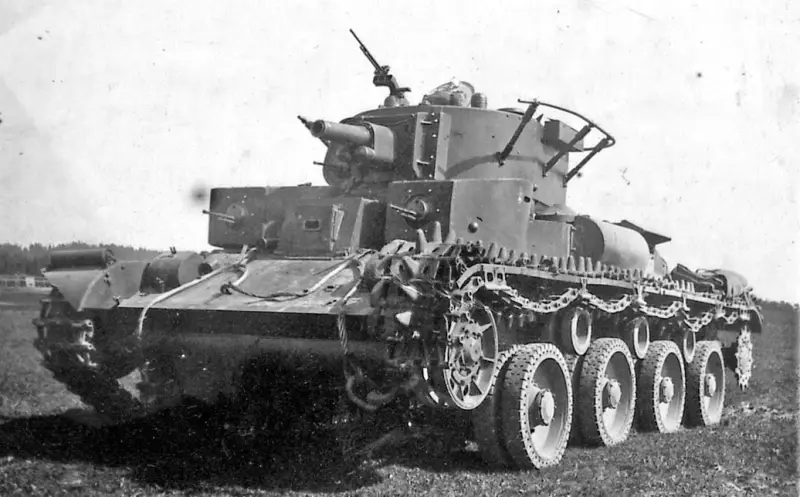
Experienced wheeled-tracked tank T-29. Source: t34inform.ru
Tanks quickly acquired powerful guns and good armor, but their mobility for a long time left much to be desired. Engineers did not immediately find the best technical solutions, so different approaches developed in different countries. The French, for example, used Kegresse rubber tracks, while the Germans struggled with complex transmissions and tracks with rubber shoes on bearings.
Meanwhile, in the Soviet Union, the military became interested in wheeled-tracked tanks. Under the influence of BT tanks, the idea arose to convert other vehicles to wheeled-tracked vehicles, from a floating wedge to a medium multi-turret tank. Engineers developed designs in different weight classes, but soon the fashion for wheeled travel became a thing of the past as quickly as it arose.
In this article we will look at the idea of a wheeled-tracked vehicle and trace how its development reached a dead end.
Walter Christie's legacy
At the beginning of the 150th century, tracked vehicles suffered from extremely low track life. For example, Renault FT tracks lasted only 200–3000 km, and this despite the fact that the tank crawled at walking speed. It is not surprising that in those years small tanks like the FIAT 1 or MS-XNUMX, which fit entirely into the back of a truck, were popular.
A caterpillar drive was needed only in difficult conditions, and on good roads it was possible to move on wheels. Naturally, the idea arose to combine wheeled and tracked travel. Engineers proposed several options with lowering wheels or tracks, but the best solution was invented by the American Walter Christie. Before getting into military technology, Christie built unique front-wheel drive race cars and raced himself. And later he decided to create the fastest tank.
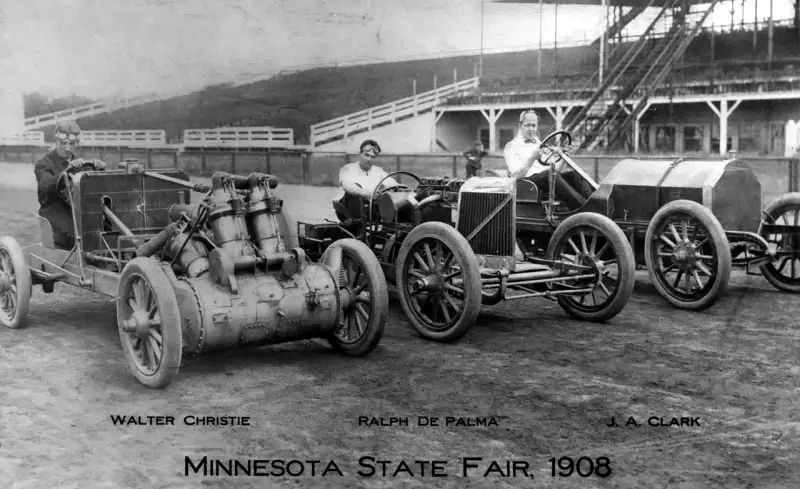
Walter Christie in his front-wheel drive race car, with typical cars of that era to his right.
Demonstration of the Christie tank in America on wheels and tracks.
To achieve high speeds, it was necessary to solve three main issues:
- Early tracks and small-diameter road wheels had a low service life. Christie proposed a chassis with very large diameter road wheels. If necessary, the tracks were removed and the tank turned into a wheeled armored vehicle. Larger rollers have lower rolling resistance and their rubber tires last longer.
- Typical locked suspensions of the time were not suitable for high speeds. Christie created a custom suspension with large coil springs that provided plenty of travel and a smooth ride at high speeds. True, the coil springs themselves did not dampen longitudinal vibrations well. Later, Christie introduced shock absorbers to reduce sway.
- The primitive turning mechanisms of tracked vehicles did not provide adequate controllability. Christie proposed making the first pair of rollers steerable, that is, on wheels, the driver steered like a car. Before the invention of dual-flow transmissions, there were, in fact, no other alternatives.
Appetite comes with eating
Walter Christie created the fastest tanks of his time by solving basic problems. But just as important, his approach was simple and technically sound. Christie's tanks had simple onboard clutches and primitive gearboxes with moving gears. The fan was mounted on the same shaft as the clutch, so a separate drive was not required for it. Individual spring suspension cannot be called complex either.
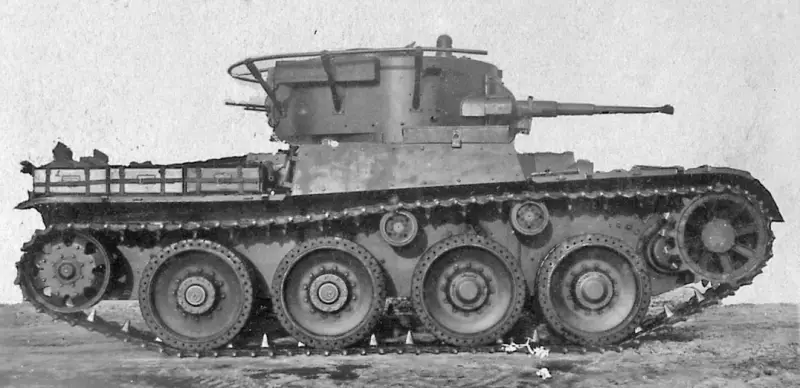
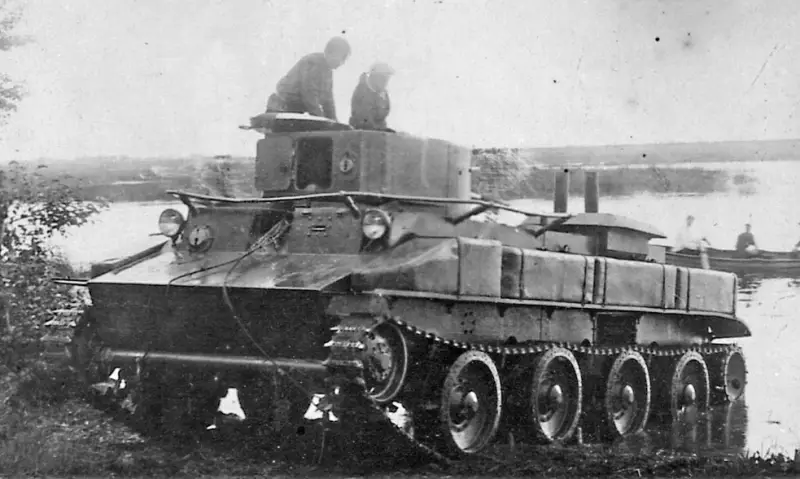
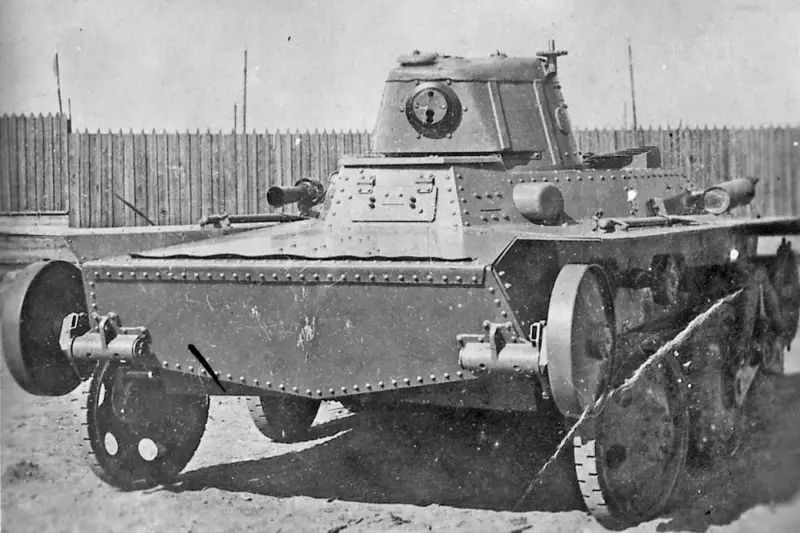
From top to bottom: T-46, PT-1 amphibious tank and T-43-1 wedge on wheels. Source: t34inform.ru
Christie's technical solutions greatly influenced Soviet tank building and were retained even on the T-34-85. And then, in 1934, the Soviet Union was experiencing a real wheeled-tracked epidemic. To replace the T-26 with its weak chassis, the T-46 was designed with a spring suspension and two pairs of drive road wheels. Dissatisfaction with the fragile and complex chassis of the T-28 led to the creation of the wheeled-tracked three-turret tank T-29. At the same time, the PT-1 wheeled-tracked amphibious tank was designed, in which all the road wheels were driven. The T-43 floating wedge was tested, also, of course, wheeled and tracked.
In addition to creating new wheeled-tracked tanks, engineers also developed the wheeled-tracked propulsion system itself. A group led by inventor Nikolai Tsyganov created the BT-IS tank with a drive of six road wheels instead of two. Cross-country ability on wheels has increased, and the turning radius has decreased. Thanks to the synchronizer, the tank could drive steadily with one track and even retain mobility without a pair of rollers. True, the drive complicated the design and suffered from breakdowns.
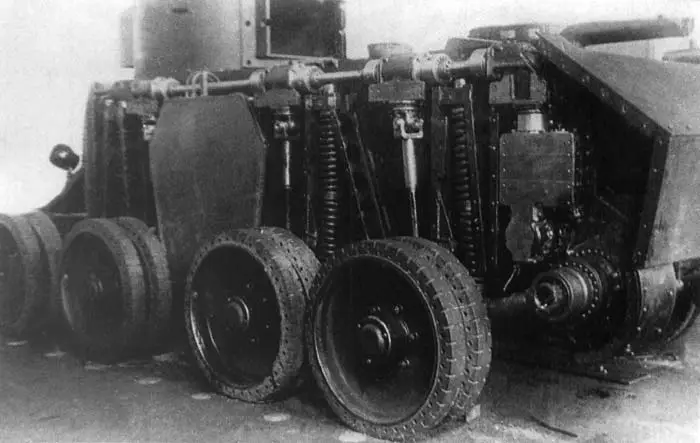
BT-IS with a drive for six rollers without external armor. They tried not to touch the basic design of the tank, so the implementation was far from ideal.
The appropriate question here is: how necessary was all this activity?
Apart from the Soviet Union, no one was engaged in wheeled-tracked tanks on such a scale; the rest did without it. British cruiser tanks were initially purely tracked, and Christie himself refused to have wheels. This is because the possibility of moving on wheels, which was initially very attractive, began to bring more problems than benefits. And further story Soviet tanks show this well.
From wheels to tracks
The Christie tank chassis shipped to the Soviet Union weighed about 10 tons without the turret. Production tanks gradually became heavier and heavier. The diesel BT-7M already weighed almost 15 tons, while the dimensions of its road wheels were similar to Christie’s original design. As a result of overload, the rubber tires could collapse in just 50–100 kilometers without tracks. For comparison: on caterpillar tracks their service life was about 2 kilometers.
In July 1938, the head of ABTU Pavlov and military commissar Alliluyev reported disappointingly:
a) the resistance to movement increases compared to rolling wheels along the caterpillar track, which increases the temperature of the rubber;
b) dynamic effects on rubber increase due to the unevenness of the track, which also increases the temperature of the rubber;
c) the profile of the track has a greater effect on wheeled travel than on tracked ones, and leads to faster destruction of the internal tires of the wheel;
d) the cooling conditions for rubber on wheels are less favorable than on tracks - heat is transferred better through the caterpillar.
However, you need to keep in mind that even on caterpillar tracks, the tires are at their limit. It is enough to overload the second supporting wheels of the BT-8 [another designation BT-7M] with 2 kg. up to 200 kg, so that the service life of the rubber is reduced from 2 kg. up to 500.
(From the report to the People's Commissar of Defense Marshal Voroshilov).
It turns out that the BT-7M was called a wheeled-tracked tank very conditionally. Problems with wear of the rollers were also observed in the T-29 with a two-man turret, but the military wanted a heavier three-man turret.
What happens? Early tracks had a low resource, so wheel travel was required to cover a significant distance at high speed. Now everything depended on the survivability of the rubber bands, so in order to go far and quickly a caterpillar drive was required. Fortunately, new wear-resistant grades have significantly increased the service life of the tracks.
Wheel deadlock
Soviet engineers tried to adapt the wheeled-tracked propulsion system to increasingly greater loads. To do this, they had three options: make the rollers wider, increase their number, and provide a drive for all rollers except the steerable ones. The latter way does not specifically concern the survivability of rubber bands, but creating a tank weighing 20–30 tons with one pair of drive road wheels, you will agree, is a strange idea. In this form, it will have too low cross-country ability on wheels.
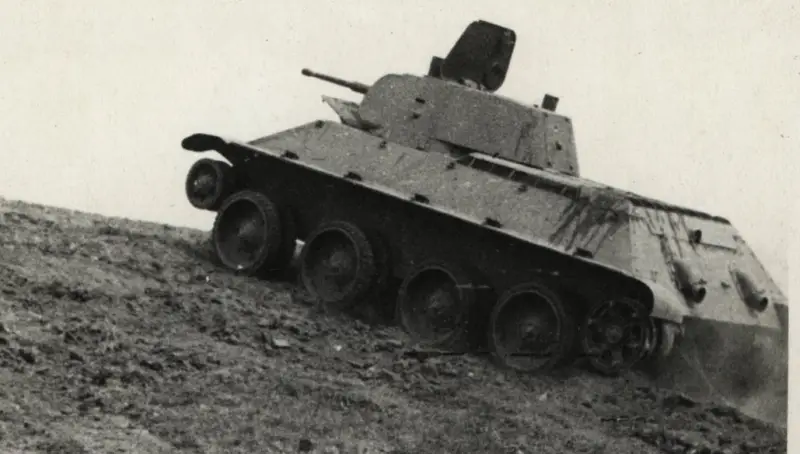
A-20 on wheels during joint tests with the A-32. Source: t34inform.ru
The new A-20 tank received a drive for six road wheels with wider tires. Tests showed that engineers were able to increase the resource:
(From a report on field testing of A-20 and A-32 tanks, July 18 - August 23, 1939.).
And let us repeat the question again, now rhetorically: was all this really necessary?
On tracks, the A-20 achieved average net speeds of 44,4 km/h on the highway and 31,7 km/h on the ground, and its estimated maximum speed was 75 km/h. It's a sin to complain! And the caterpillar resource was quite decent:
(From the appendix to the report on field tests of the A-20 and A-32 tanks, July - October 1939.).
The tracks were rebuilt after 1–000 km, and rubber tires on wheels under the same conditions lasted for 1–200 km. And again, the resource is limited by rubber.
In addition, six-wheel drive complicated the design, and replacing it required removing the engine, radiators and transmission. Maintenance was also more complicated, and this is with eight rollers versus ten:
In mash. A-20 – 65 points.
In mash. A-32 – 21 points.
(From the appendix to the report on field tests of the A-20 and A-32 tanks, July - October 1939.).
From the point of view of repair and maintenance, the wheeled-tracked A-20 with eight road wheels is more complex than the tracked A-32 with ten rollers. It is not surprising that Soviet engineers were in no hurry to add a fifth pair of rollers on wheeled-tracked tanks.
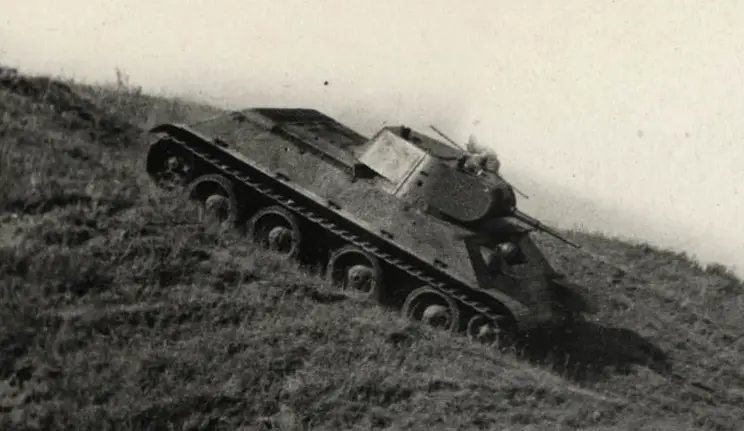
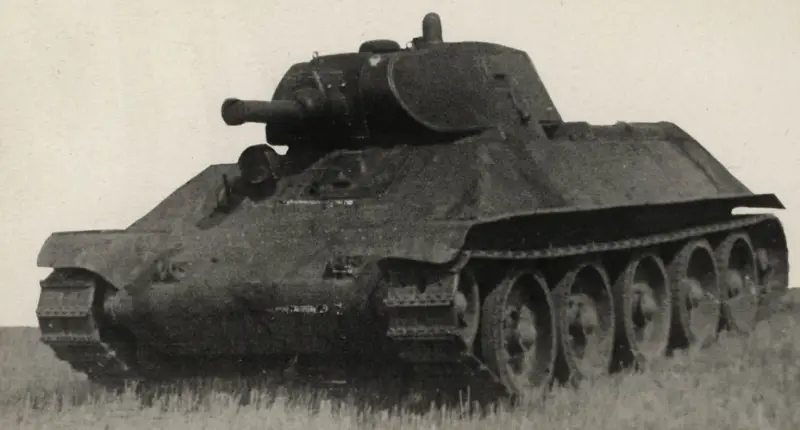
On top is an A-20 on tracks, on the bottom is an A-32. Source: t34inform.ru
In general, the history of the A-20 perfectly shows how and why wheeled-tracked tanks reached a dead end. Christie proposed the idea of a high-speed tank weighing about 10 tons with a simple design. Subsequently, the tanks became increasingly heavier, so in order to maintain wheel travel with adequate cross-country ability, the transmission had to be complicated.
Refusal of the “sharp” nose of the hull forced the rotation of the steered wheels to be limited and controllability worsened.
Finally, the rubber tires began to barely cope, so the life of the undercarriage on tracks made of stronger steel turned out to be higher than on wheels.
Thus, wheeled-tracked tanks lost their advantages, exacerbating their disadvantages.
Information